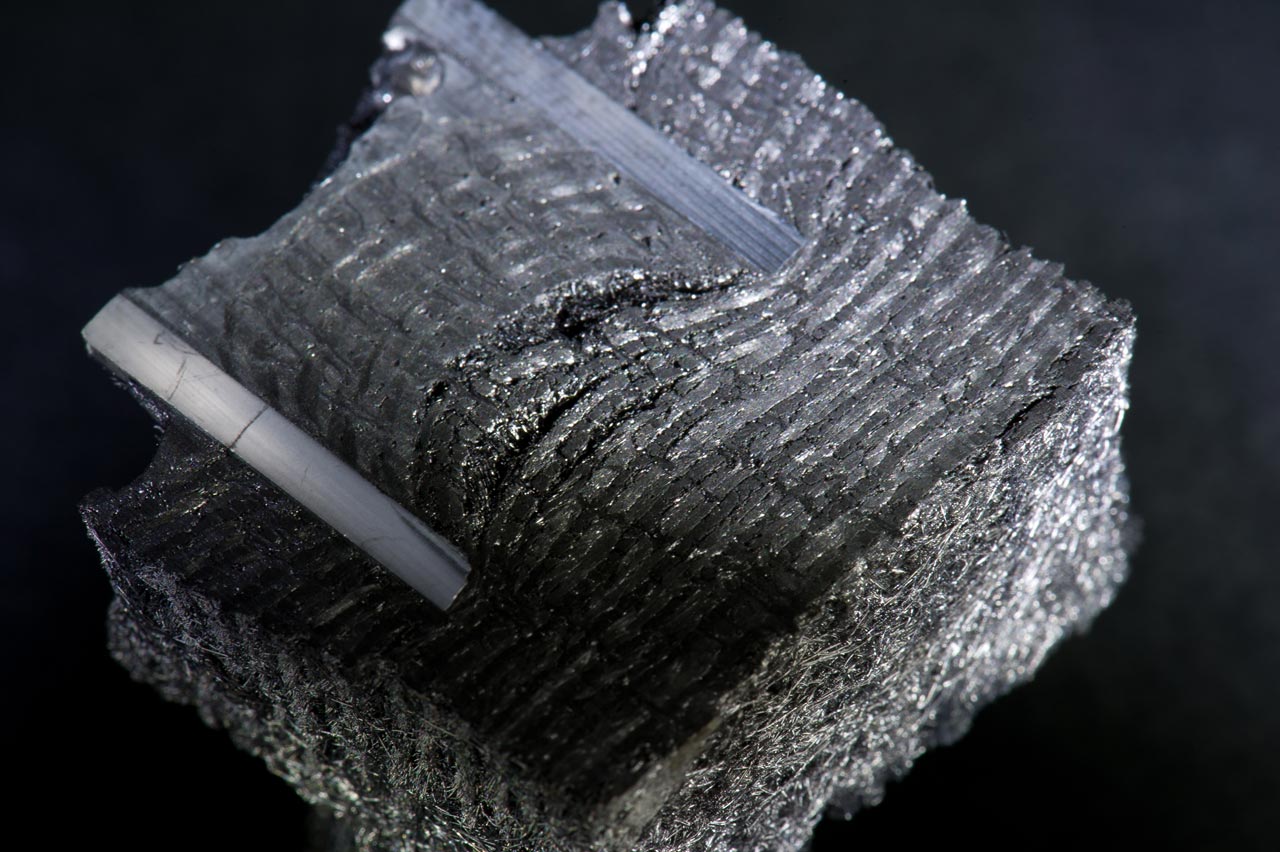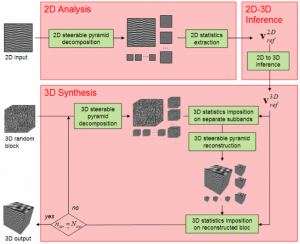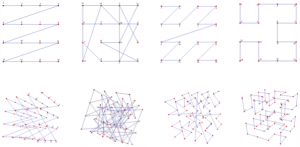Within the PyroMaN project frame, image processing is involved at two levels. The first one is the synthesis of 3D images from 2D information, a key step for the IGAR method. The second one is the characterization of HRTEM images, either experimental or simulated.
Volumic data synthesis by 2D/3D inference
The goal is to generate 3D images similar to 2D HRTEM LF images. The 3D blocks will be used for the IGAR reconstruction method. The main idea is to produce 3D images using the 2D image(s) obtained by HRTEM as an example. Two families of approaches, parametric and non-parametric, are developed.
Parametric 2D/3D approach
This approach, the principle and first results of which have been already published [DaCosta&Germain2010, Viti et al. 2009,Da Costa & Germain 2009] is an extension of the work of Portilla & Simoncelli for the synthesis of 2D textured images. It features three steps :
- (i) 2D Analysis : multiscale decomposition of the HRTEM example in a pyramid of complex sub-bands ; statistical analysis of the sub-bands; production of a pyramidal family of 2D reference statistics (mean, variance, skewness, kurtosis and autocorrelation functions).
- (ii) 2D-3D statistical inference: production of a pyramidal family of target 3D statistics. This key step rests on the orthotropy property verified by the pyrocarbons. It manifests itself as an invariance by rotation around the 001 axis of the statistics.
- (iii) Synthesis of 3D images : an initially random volumic texture is sequentially decomposed by a 3D pyramidal decomposition, modified to better fit the target 3D statistics, then rebuilt, and all over again etc. until a final match between statistics.
Non-parametric approach : synthesis by patches
The second method is a patch-wise synthesis. There are several algorithms for a non-parametric, multi-scale synthesis of textures. In the 2D image, small pixel environments are sampled and stored in a “patch database”. The 3D output block is generated by modifying iteratively every pixel neighborhood so that it matches better some patch in the database – the match is searched only on two 2D slices of the whole 3D set.
Though working in a well-known frame, we are currently proposing original methods of sampling, 3D scan paths, and optimization [Urs et al. 2010, Urs et al. 2011].
See here a movie illustrating the evolution of the image after every iteration of the non-parametric synthesis.
HRTEM Lattice Fringe Image Analysis
In the frame of the PyroMaN project, image analysis is also used for the characterization of Lattice Fringe HRTEM images, experimental or virtual (3D as an output of the 2D/3D inference methods or 2D after atomistic reconstruction and application of a virtual microscope).
The aim is to measure on the lattice fringe images some morphological characteristics such as the fringe length and tortuosity, the stacking dimensions, etc …
Ce message est également disponible en : French










